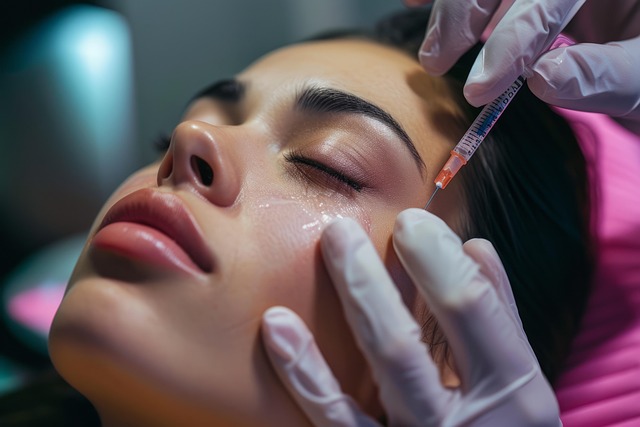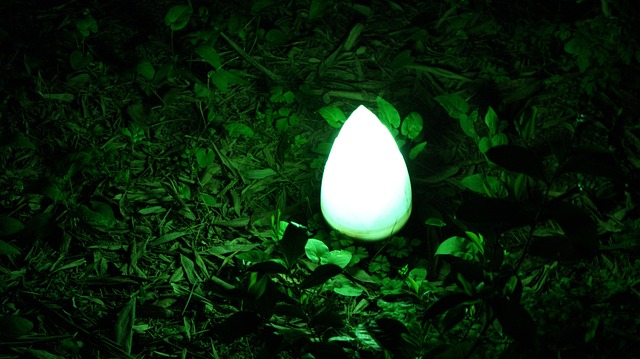Botox and dermal fillers are popular non-surgical anti-aging treatments, but they differ in their approaches. Botox relaxes muscles to prevent dynamic wrinkles, ideal for fine lines around eyes, forehead, and mouth, with results lasting 3-6 months. Dermal fillers enhance volume and lift by adding substances like hyaluronic acid, providing immediate results that last up to two years. The choice depends on whether one seeks subtle improvements or dramatic transformations. Both offer safe, non-invasive options for combating aging signs without surgery.
“Uncover the secrets of youthful skin with non-surgical anti-aging treatments. This comprehensive guide explores Botox, a leading solution in the aesthetics world, and its comparison with dermal fillers. From understanding the science behind Botox’s ability to smooth fine lines and wrinkles, to navigating the benefits, side effects, and application process, we demystify this popular procedure. Learn how it stacks up against dermal fillers, and make an informed decision for achieving a natural, refreshed look.”
Understanding Botox: A Comprehensive Overview

Botox has become a go-to non-surgical anti-aging treatment, offering a unique approach to smoothing fine lines and wrinkles. This popular procedure involves injecting a small amount of botulinum toxin into specific muscle groups, temporarily paralyzing them and preventing the contractions that contribute to wrinkle formation. Unlike dermal fillers, which add volume and enhance facial contours, Botox focuses on relaxing muscles for a more subtle yet effective result.
Understanding the mechanism behind Botox is key to appreciating its benefits. By blocking neuromuskular transmission, it reduces dynamic wrinkling caused by repeated muscle contractions. This makes it particularly effective for treating expression lines around the eyes, forehead, and mouth. While dermal fillers are excellent for adding structure and definition, Botox provides a more natural-looking solution by enhancing the skin’s appearance without altering its depth.
Dermal Fillers: An Alternative Approach to Anti-Aging

When considering non-surgical anti-aging treatments, it’s crucial to explore alternatives like dermal fillers alongside Botox. While both are popular for reducing signs of aging, they work in distinct ways. Botox primarily prevents muscle contractions that cause dynamic wrinkles, offering a smoother appearance. On the other hand, dermal fillers enhance volume and lift by injecting hyaluronic acid or other substances into the skin, plumping up deep wrinkles and enhancing facial contours.
Choosing between Botox vs. Dermal Fillers depends on individual needs and preferences. Dermal fillers are ideal for patients seeking more immediate, noticeable results in terms of enhanced volume and definition. Botox, however, is favoured by those aiming to soften fine lines and prevent future wrinkle formation. Understanding these differences allows individuals to make an informed decision tailored to their anti-aging goals.
The Science Behind Botox: How It Works

Botox, a popular non-surgical anti-aging treatment, has taken the beauty industry by storm. Its scientific basis lies in the protein toxin produced by the bacterium Clostridium botulinum. When injected into specific muscles, Botox blocks nerve signals, temporarily paralyzing them. This action prevents muscle contractions, which over time can cause dynamic facial lines and wrinkles to form.
Unlike dermal fillers that add volume to the skin, Botox works from within, smoothing out lines and providing a more relaxed appearance. This makes it a preferred choice for those seeking subtle yet effective results, especially in areas like forehead creases, crow’s feet around the eyes, and frown lines between the eyebrows—areas often targeted in the battle against aging when considering Botox vs Dermal Fillers.
Benefits of Non-Surgical Botox Treatments

Non-surgical Botox treatments offer a multitude of benefits for those seeking to combat signs of aging without invasive procedures. One of the key advantages is its ability to temporarily reduce the appearance of wrinkles and fine lines by relaxing facial muscles, providing a more youthful contour. This treatment is particularly appealing for individuals who want to avoid the longer recovery times associated with surgical options.
Compared to dermal fillers, Botox provides a different approach to anti-aging. Fillers add volume and plumpness to the skin, addressing deep wrinkles and enhancing facial features, while Botox focuses on preventing muscle contractions that cause dynamic lines. This makes it ideal for targeting expression lines and giving a more relaxed, rejuvenated look. Many patients appreciate the subtle yet effective results of Botox, which allows them to maintain a natural appearance while enjoying a younger-looking face.
Disadvantages and Side Effects of Botox

While Botox is a popular non-surgical anti-aging treatment, it’s not without its potential drawbacks and side effects. One of the most common issues is temporary muscle weakness or paralysis, which can affect facial expressions. This side effect, known as botulism, is actually the intended result for wrinkles but can also lead to unintended consequences like difficulty chewing or eye drooping if not administered correctly.
When compared to dermal fillers, another popular anti-aging option, Botox has a different set of advantages and disadvantages. Dermal fillers provide immediate results with longer-lasting effects, often lasting up to two years. They’re ideal for adding volume and defining facial contours. In contrast, Botox offers subtle, natural-looking results that take a few days to become visible, and effects typically last between 3-6 months. This makes Botox a better choice for those seeking subtle adjustments rather than dramatic transformations.
Choosing Between Botox and Dermal Fillers

When considering non-surgical anti-aging treatments, many individuals find themselves contemplating the options between Botox and dermal fillers. Both have gained immense popularity in the cosmetic world due to their effectiveness in minimizing signs of aging. However, they work differently and cater to specific concerns.
Botox is a neurotoxin that relaxes muscles, preventing them from making certain facial movements, thus reducing the appearance of wrinkles. It’s particularly effective for fine lines and dynamic wrinkles around the eyes, forehead, and mouth. On the other hand, dermal fillers enhance volume and lift by injecting hyaluronic acid or collagen into the skin. They are ideal for individuals seeking to correct deeper wrinkles, enhance facial contours, and add back definition lost over time. The choice between Botox and dermal fillers depends on personal preferences, specific concerns, and desired outcomes.
The Application Process: What to Expect During a Botox Session

During a Botox session, a qualified professional will commence by assessing your facial areas for fine lines and wrinkles, identifying target zones for treatment. Using a fine needle, they’ll inject small amounts of botulinum toxin into specific muscles, a process known as botox injections. This procedure is typically quick, often taking just 15-30 minutes, depending on the area being treated and your personal needs. Unlike dermal fillers, which add volume to the skin, Botox works by temporarily paralyzing the muscles that cause wrinkles, offering a more subtle yet effective anti-aging solution. You can expect minimal discomfort during the treatment, with many patients reporting only light soreness or stinging sensations at the injection sites. After the session, there may be slight redness and swelling, but these usually subside quickly.
Results and Expectations: What You Can Achieve

When considering non-surgical anti-aging treatments, understanding the results and expectations is key. One of the most popular choices, Botox, offers significant advantages in smoothing fine lines and wrinkles, particularly around the eyes and forehead. Results can typically be observed within a week after treatment, with effects lasting anywhere from 3 to 6 months, making it an efficient option for those seeking temporary yet noticeable improvements.
In comparison, dermal fillers provide longer-lasting results, usually between 6 to 12 months, by plumping and enhancing specific areas of the face. While Botox is ideal for preventing dynamic lines caused by facial expressions, dermal fillers are often preferred for adding volume and defining contours. The choice between these two treatments ultimately depends on individual goals and skin type, with both offering safe, non-invasive ways to combat signs of aging without surgery.
Safety Precautions and Common Misconceptions Debunked

When considering non-surgical anti-aging treatments, it’s crucial to address safety concerns and dispel common myths. One often misunderstood procedure is Botox, which has been a game changer in the beauty industry for decades. Unlike dermal fillers, Botox works by relaxing muscles to prevent dynamic wrinkle formation rather than adding volume. This makes it a preferable option for those seeking subtle enhancements without significant substance injection.
A prevalent misconception is that Botox is dangerous or unpredictable. In reality, when administered by a qualified professional, it is generally safe and effective. The most common side effects are temporary redness, swelling, or mild bruising at the injection site. Moreover, the results of Botox treatment can last for several months, offering long-term benefits without the need for frequent procedures, unlike some dermal fillers. This makes it a more cost-effective and convenient choice for many individuals looking to combat signs of aging.
